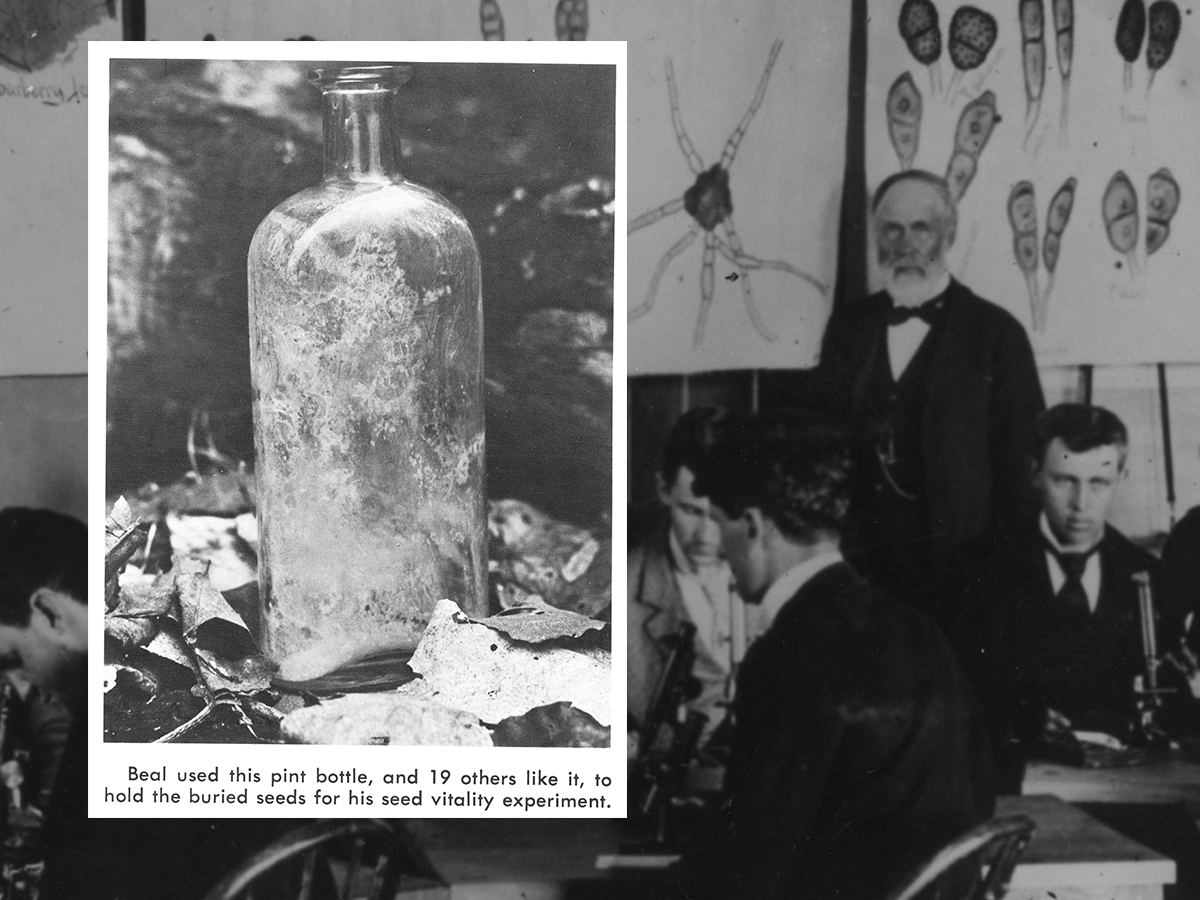The New York Times digs 142-year-old Beal seed experiment
Frank Telewski, curator of the W. J. Beal Botanical Garden and Campus Arboretum, with Marjorie Weber, Lars Brudvig and David Lowry of plant biology -- all EEB core faculty -- are featured in a New York Times article about the ongoing study begun by MSU botanist William Beal in 1879.

Beal buried 20 bottles with 21 different species of plant seeds to see if they could grow after years of staying dormant. The four current tenders of the project are cast in a story of science passed down from generation to generation. The story follows them as they venture out in the pre-dawn darkness to follow Beal's map to dig up glass bottles containing over a thousand seeds: 50 each of 21 different species, from black mustard to white clover to redroot amaranth.
This plant reserve is known as the seed bank. By experimentally recreating it, Beal hoped to better understand how long plants could last in the soil, and what triggers them to grow. He was likely trying to help local farmers — frustrated by endless weeding, and wondering how long it would take “before they might have some hope of seeing a decline in the seed bank, and their workload going down,” Telewski said.
Read the NY Times story



